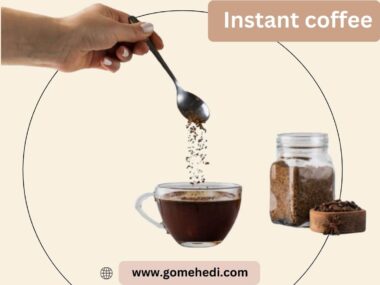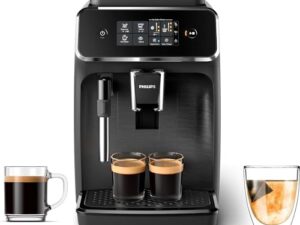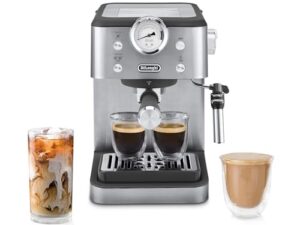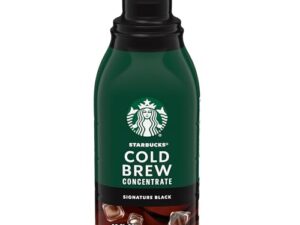If you want a perfect shot of espresso, the grind size of your coffee can make all the difference. Too coarse, and your espresso will taste weak and watery.
Too fine, and it might turn bitter or clog your machine. Finding the right grind is a simple step that transforms your coffee experience from good to exceptional. You’ll discover exactly how fine to grind coffee for espresso, so every cup you make bursts with rich flavor and smooth texture.
Keep reading to unlock the secret to barista-quality espresso right at home.
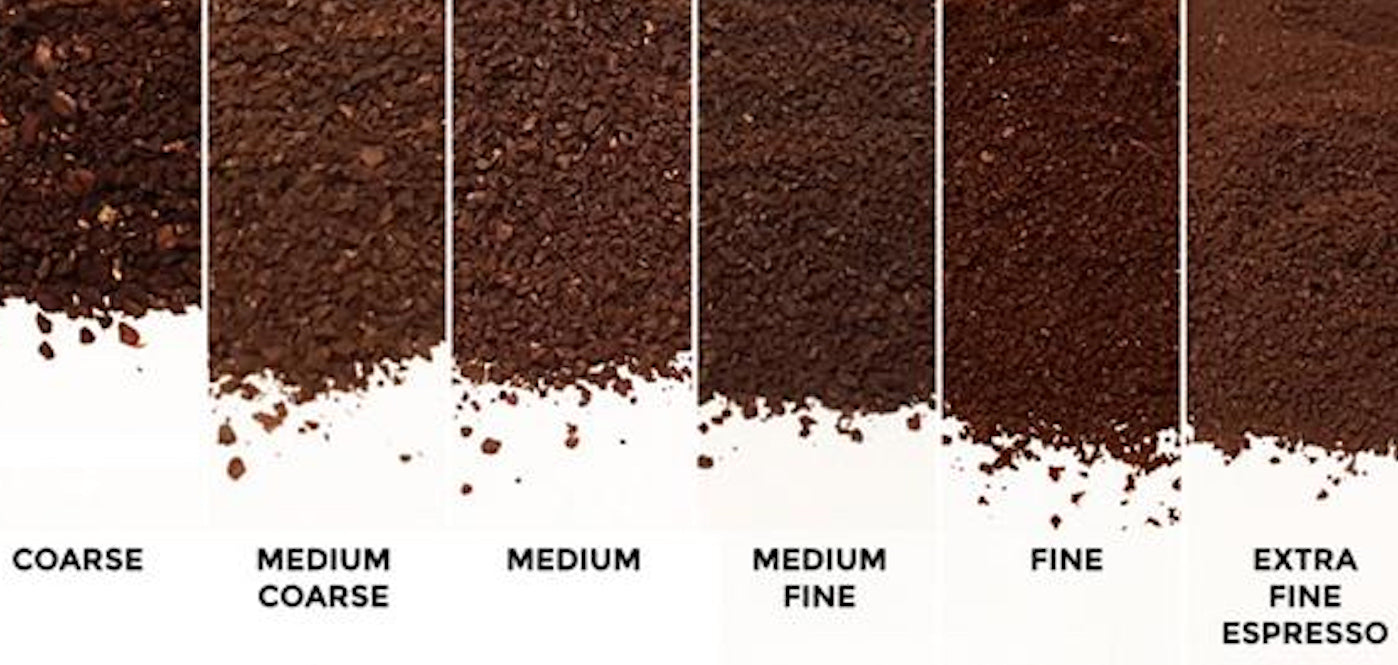
Credit: weaverscoffee.com
Why Grind Size Matters
Grind size plays a big role in making great espresso. It controls how water moves through the coffee grounds. This affects how much flavor and strength the coffee has. Choosing the right grind size helps get the best taste from your beans.
Impact On Extraction
Extraction means pulling flavors from coffee grounds with water. Fine grounds slow down water flow, letting it absorb more flavors. Coarser grounds let water pass quickly, causing weak extraction. Too fine can cause over-extraction, making coffee bitter. Too coarse leads to under-extraction, making coffee sour or weak. The right grind size balances this for smooth, rich espresso.
Flavor And Aroma Effects
Grind size changes the taste and smell of espresso. Finer grinds often bring out stronger, bolder flavors. They also enhance aroma by releasing more oils and compounds. Coarser grinds produce lighter flavors and less aroma. Proper grind size helps keep the natural sweetness and richness of coffee. It makes each espresso shot full of flavor and inviting aroma.
Characteristics Of Espresso Grind
Espresso grind has unique traits that affect the coffee’s taste and extraction. The grind size must be precise to deliver a rich, strong espresso shot. Small changes in grind size can change the flavor and texture of the espresso. Understanding these traits helps in making the perfect cup.
Texture And Consistency
The espresso grind is very fine, almost like powdered sugar. This fine texture helps water pass through coffee quickly but still extracts rich flavor. The grind must be even, with no large pieces or dust. Consistent grind means uniform extraction and better taste. Uneven grind causes bitter or weak coffee.
Comparing To Other Brew Methods
Espresso grind is finer than drip or French press grind. Drip coffee uses medium grind, and French press uses coarse grind. The fine grind for espresso creates more surface area for water contact. This helps extract flavor in a short time under pressure. Other methods need larger particles for slower extraction.
Tools For Grinding Coffee
Grinding coffee for espresso needs the right tools. The grind size affects the taste and quality of your espresso. Using the best grinder helps make a perfect espresso shot every time. Understanding different grinders helps you choose the best one for your needs.
Blade Vs Burr Grinders
Blade grinders chop coffee beans unevenly. They create inconsistent grind sizes. This inconsistency affects espresso taste and extraction. Blade grinders are cheaper but less precise.
Burr grinders crush beans between two surfaces. They produce uniform grind sizes. This consistency makes better espresso. Burr grinders offer more control over grind size. They are the preferred choice for espresso lovers.
Recommended Grinders For Espresso
Look for grinders with fine grind settings. Brands like Baratza and Breville offer good options. Manual burr grinders work well for small batches. Electric burr grinders suit daily espresso making.
Choose grinders with easy grind adjustment. This helps dial in the perfect espresso grind. Durable materials ensure long-lasting use. Quiet operation is a bonus for home use.

Credit: www.youtube.com
Adjusting Grind For Your Espresso Machine
Adjusting the grind for your espresso machine is key to great coffee. The grind size affects the taste, strength, and texture of your espresso. Different machines need different grind settings. Finding the right grind size takes some testing and patience. Small changes can make a big difference in your shot quality.
Dialing In The Grind Size
Start with a medium-fine grind. It looks like table salt. Pull a test shot and watch the flow. The espresso should pour slowly, like warm honey. If it flows too fast, the grind is too coarse. Make it finer to slow the flow. If it drips very slowly or not at all, the grind is too fine. Make it coarser to speed up the shot.
Adjust in small steps. Change the grind setting just a little each time. Test the shot again after each change. Taste the espresso. It should be balanced, not bitter or sour. Keep adjusting until the shot tastes smooth and rich.
Troubleshooting Common Issues
Espresso tastes bitter? Grind finer or reduce the extraction time. Tastes sour? Grind coarser or increase extraction time. Shots pull too fast? Grind finer or pack the coffee tighter. Shots pull too slow? Grind coarser or tamp lighter.
Uneven flow or channeling? Check your tamping technique. Make sure coffee grounds are level and evenly packed. Clean your machine regularly to avoid blockages. Consistent grind size helps avoid problems.
Tips For Freshness And Storage
Keeping coffee fresh is key to making great espresso. Coffee starts to lose flavor soon after grinding. Proper storage helps keep those rich flavors longer. Follow these tips to keep your coffee fresh and tasty.
Grinding Just Before Brewing
Grinding coffee just before brewing keeps flavors at their peak. Ground coffee loses aroma and taste quickly. Grind only the amount you need. This way, your espresso will have a strong, fresh flavor. Avoid grinding coffee hours or days before use.
Proper Coffee Storage Methods
Store coffee in an airtight container to block air and moisture. Keep the container in a cool, dark place. Avoid sunlight and heat, which speed up flavor loss. Do not store coffee in the fridge or freezer. These can add moisture and damage the beans. Use small containers if you buy coffee in bulk. This reduces air exposure each time you open it.
Testing And Refining Your Grind
Testing and refining your coffee grind for espresso is key to a perfect shot. Small changes in grind size affect taste and extraction time. You need to experiment carefully and observe results. This process helps find the best grind for your machine and beans.
Taste Testing Techniques
Start by brewing a shot with your current grind setting. Notice the flavor and texture. Is it bitter or sour? Too strong or weak? Taste testing helps spot issues linked to grind size.
Try a few shots with slightly finer or coarser grinds. Compare the taste, body, and crema. Use a clean palate between tests. Water or plain crackers work well. Write down your impressions after each test.
Tracking Your Adjustments
Keep a simple log of your grind changes and results. Note grind size, dose, extraction time, and taste notes. This record guides your next adjustment.
Adjust grind by small steps to avoid big changes in flavor. Track how each change affects bitterness, acidity, and strength. Over time, you will see a clear pattern. This helps find your ideal espresso grind quickly and consistently.

Credit: grosche.ca
Frequently Asked Questions
What Grind Size Is Best For Espresso Coffee?
Espresso requires a fine grind, similar to powdered sugar. This size ensures proper extraction and rich flavor in a short brewing time. Too coarse or too fine grinds can cause under-extraction or bitterness. Consistency in grind size is key for the perfect espresso shot.
How Does Grind Size Affect Espresso Taste?
Grind size controls extraction speed and flavor balance. A finer grind slows water flow, enhancing richness and crema. A coarser grind speeds flow, resulting in weak, sour shots. Adjusting grind size helps achieve a balanced, smooth espresso with ideal bitterness and sweetness.
Can I Use Pre-ground Coffee For Espresso?
Pre-ground coffee can work but is less ideal. It may not have the precise fineness needed for espresso. Freshly ground beans offer better flavor and aroma. For best results, grind your beans just before brewing to ensure optimal espresso quality.
Why Is Consistent Grind Important For Espresso?
Consistent grind size ensures even extraction and flavor balance. Uneven particles cause channeling, leading to weak or bitter espresso. Consistency helps maintain shot quality and repeatability. Using a burr grinder is recommended for uniform grind size suitable for espresso.
Conclusion
Grinding coffee fine for espresso matters a lot. It affects taste, aroma, and extraction time. Too coarse means weak coffee. Too fine leads to bitterness. Aim for a smooth, even grind size. This helps water flow just right. Fresh grinding before brewing works best.
Small changes can improve your espresso a lot. Keep trying until you find your perfect grind. Enjoy each cup with care and attention. Good coffee starts with the right grind. Simple steps make great espresso every time.

